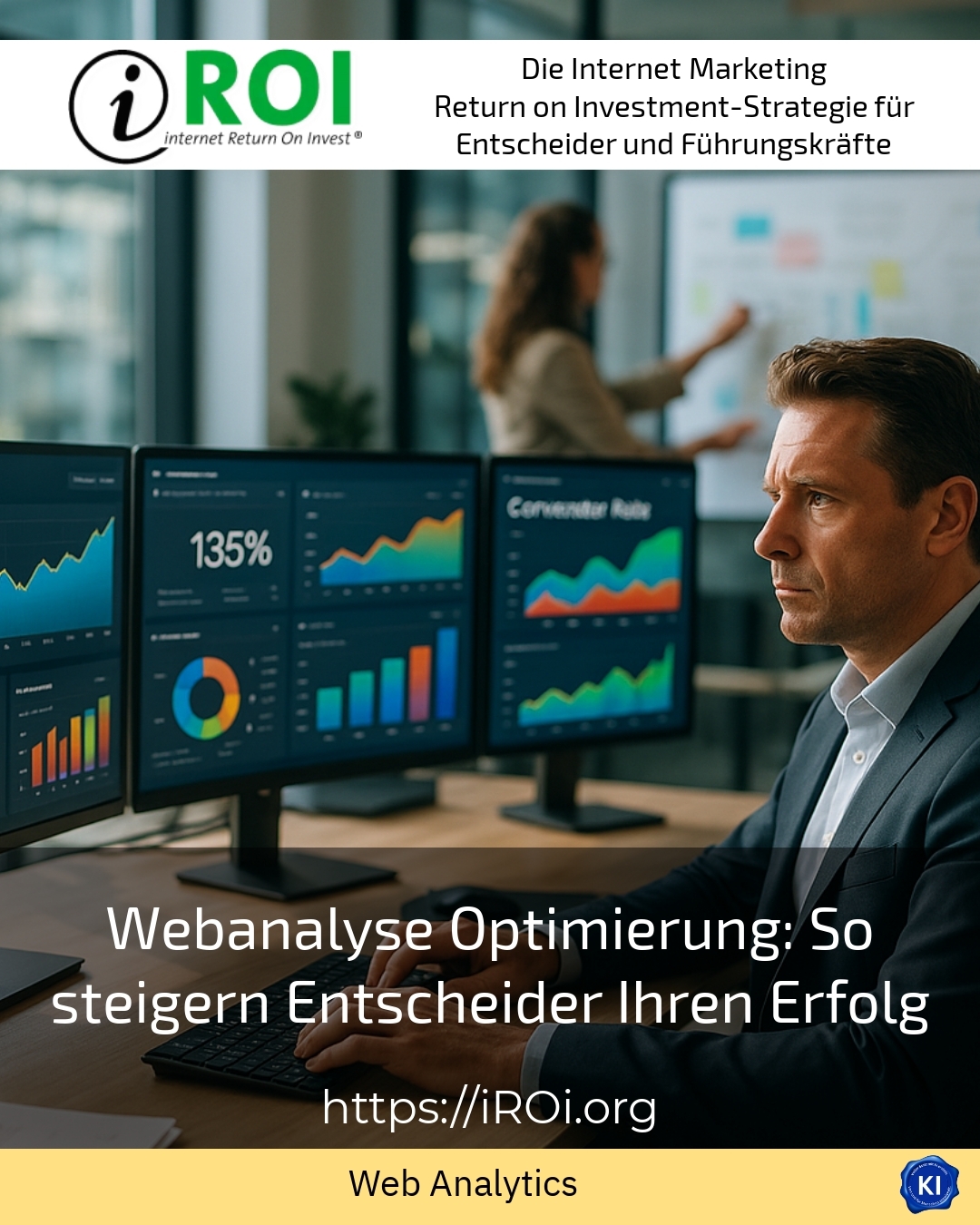Why targeted web analytics optimisation is crucial for your success
Many decision-makers are faced with the challenge of improving websites in a targeted manner and achieving measurable success. Web analytics optimisation projects are usually about obtaining reliable data and deriving specific impulses for action from it. In this way, the effectiveness of digital measures can be increased without falling into the usual promises of effectiveness. Clients often report that they lose track without support or do not know which optimisations really make sense.
How to gain clarity and focus with web analytics optimisation
Web analytics optimisation helps you to precisely understand user behaviour and systematically improve it. The initial focus is on correctly recording and analysing data, such as visitor numbers, dwell time, conversion rates or bounces. You can use this data to answer specific questions, such as which pages work particularly well or where users bounce. This transparency gives decision-makers the security they need to initiate well-founded optimisations.
It is important not to simply rely blindly on tools, but to start with a clear question and select the right metrics. In practice, it often turns out that clients benefit from support that helps them to focus on the key parameters and set priorities.
Technical basis: Core Web Vitals and mobile-first approach as cornerstones
For sustainable web analytics optimisation, the technical side should always be considered as well. Core Web Vitals are key performance indicators that measure the speed (Largest Contentful Paint), interactivity (First Input Delay) and visual stability (Cumulative Layout Shift) of a website and have a direct influence on user experience and search engine rankings. For example, the main content display should load in under 2.5 seconds to avoid bounces.
In addition, the mobile-first approach has been considered indispensable for some years now. This means that a website is first designed for mobile devices before it is adapted for larger screens. This ensures that users can navigate easily on smartphones and find content quickly. Many projects report a noticeable improvement in user behaviour after this changeover.
BEST PRACTICE at company XYZ (name changed due to NDA contract) In a web analytics optimisation project, targeted measurement of loading behaviour on mobile devices showed that optimising the image formats from JPEG to modern formats such as WebP halved the loading time. This led to a significant increase in dwell time and conversion rates without exceeding the technical outlay.
Content and SEO: optimise content in a targeted manner thanks to web analytics findings
Another key area of web analytics optimisation is the evaluation of search intentions and the targeted adaptation of content. The appropriate keyword strategy is developed on the basis of data and continuously reviewed. This allows you to find out which terms and questions your target group actually uses. From this, thematic clusters can be formed in order to precisely align content and avoid overlaps.
AI-supported tools can provide support here by analysing search trends and providing suggestions for content optimisation. It is important to design content in such a way that it fulfils the needs of both users and search engines. Clients are often assisted in structuring their texts more clearly and inserting SEO-relevant metadata.
BEST PRACTICE at company XYZ (name changed due to NDA contract) In a consultancy project, the support helped to create a keyword map and consolidate existing pages. By merging thematically similar content and adapting the meta information, a significant increase in visibility was achieved, which stabilised over several months.
Success measurement and continuous optimisation are key
Sustainable web analytics optimisation is not possible without measuring success. Decision-makers know that the database is regularly reviewed in order to recognise which measures are working and where there is room for improvement. The focus is not only on rankings, but also on user interaction and click behaviour.
Tools such as visibility indices or competitor monitoring provide important indicators for assessing your own position in the market. Agile optimisation cycles allow you to react to changes and gradually adapt your strategy. This makes web analytics optimisation a dynamic process that supports long-term success.
BEST PRACTICE at company XYZ (name changed due to NDA contract) As part of an ongoing project, a regular analysis of visitor sources was introduced in order to better manage marketing channels. By analysing user paths, campaigns could be better targeted and the click rate increased by 15 %. This provided decision-makers with transparent data as a basis for further investment decisions.
My analysis
Web Analytics Optimisation supports decision-makers in providing targeted support for projects relating to digital performance measurement and user orientation. Instead of universal promises of salvation, there is a data-based approach that provides continuous impetus and helps to select the right measures. The combination of a technical basis, a focus on content and regular performance measurement makes optimisation effective and sustainable. Those who are accompanied here gain more security and expertise for future-proof web strategies.
Further links from the text above:
[1] Web Optimisation: Complete Guide for 2025 - EWM.swiss
[2] Content optimisation: SEO tips for better content
[5] SEO: Optimisation for better rankings in search engines
For more information and if you have any questions, please contact Contact us or read more blog posts on the topic TRANSRUPTION here.
















